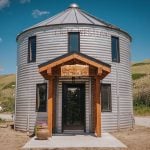The Nocturnal Owl Survey counts birds by “listening” for them at night.
Are you interested in owls? Would you like to contribute to scientific knowledge about their distribution, abundance and habits? If so, you might like to take part in the Manitoba Nocturnal Owl Survey, held annually during the last two weeks of March and the first two weeks of April. My husband and I participated in the survey a few years ago, and it was an interesting experience even though we didn’t succeed in counting any owls.
Read Also

Canadian hemp stable, but stuck on growth
Canada’s hemp industry hopes hybrid varieties, better yields, clearer regulations and new markets can help the crop break past its ceiling and get Canadian farmers planting more hemp acres.
Manitoba has about a dozen types of owls but some varieties are not around during the count period. However, eight to 10 species are usually counted, with the northern saw-whet owl, the great horned owl, and the boreal owl most often topping the list.
The Nocturnal Owl Survey was initiated in 1991 by Jim and Patsy Duncan, under the auspices of Manitoba Conservation. It was started because it was evident that other surveys, such as the Christmas Bird Count in December and the North American Breeding Bird Survey in June, did not monitor owls well, since most owl species are nocturnal birds. They hunt for food primarily after dark, and are not easily seen by anyone trying to count birds. The Nocturnal Owl Survey counts birds by listening for them at night.
Survey volunteers are given a definite route to follow. They are to take 10 stops one mile apart (1.6 km) and listen for owls for two minutes at each stop. Then they record information as to any owls heard, the direction the birds are from the counter and the estimated distance away. Weather conditions are also listed, since this can affect results. Volunteers are asked not to count when it is very windy or raining; they must wait until at least 30 minutes after sunset and try to complete the survey by midnight. The count takes two or three hours, not including travel time to and from the route. (With daylight saving time now beginning March 8, the evenings will be longer, so volunteers will need to begin later.)
Since the owl survey first began, some procedural changes have been made. In the beginning, owl call playback was used, but this was ended in 1999. The route lengths, space between listening stations and listening time, and number of routes have also changed. These changes were made to standardize the methods with those used across Canada and to become part of the nationwide owl survey.
The first year there were 21 routes, in southeastern Manitoba and adjacent Minnesota. This has gradually expanded to include the Interlake and Prairie regions of Manitoba, and some years as far north as Thompson and Gillam. In 2007 (the most recent statistics available) there were 52 routes, while some years have had as many as 115 routes. Several volunteers have been doing the survey since the beginning. One couple, Don and Ardythe McMaster, now of the Rossendale area, started about the second year, and have continued up to the present. “It was great to learn the owl calls,” says Ardythe. “It’s the first step on the road to that enviable skill: birding by ear! Sometimes we had thrilling counts, sometimes not. You never know!”
Over the years, 10 owl species have been recorded. Charts, available on the Internet, show that in 2005, 45 northern saw-whet owls were detected and about 38 great horned owls. In 2006, the corresponding numbers were 75 and 70. There was also a significant increase of long-eared owls. Statistics show that prior to 2000, the number of most species was higher, but this may be due to the counting method (with no owl calls now used). Charts show that in 2006, 91 volunteers surveyed 65 routes over 946 km and detected 262 owls. This was equivalent to one owl every 3.6 km– the highest recorded number of owl detections per kilometre in the past seven years. (This increase corresponds with an increase in small mammal populations.)
This year will be the 19th anniversary of the Nocturnal Owl Survey. Beginning in 2006 the information and materials were sent to most volunteers by e-mail. These can be located on the Internet, if you’d like to read the directions. Also available is a site with the different owl calls. This is particularly useful for beginner volunteers or birders trying to identify owls.
Dr. James Duncan, who initiated the owl survey program in Manitoba, was recently given the international “Champion of Owls Award” for his work. In addition to organizing the survey and compiling the results, Dr. Duncan presents live owl programs to schools, works with film crews, works in conservation and recovery programs, and has authored a book on owls.
Although we didn’t manage to count any owls the year we took part, we enjoyed the experience. If you would like to participate in the Nocturnal Owl Survey, contact Dr. Duncan at [email protected]or 204-945-7465.
You might first want to check out the information on the website. If you just want to listen to the owl calls, check out the site too.
http://www.naturenorth.com/summer/creature/owl/owl_new/owl2005.html.– Donna Gamache writes from MacGregor, Manitoba














